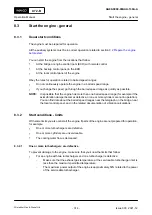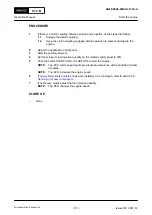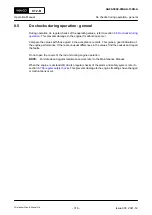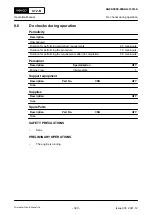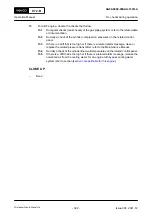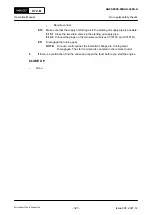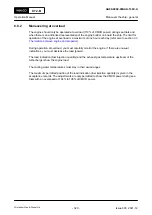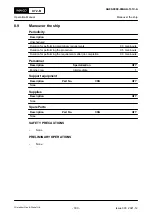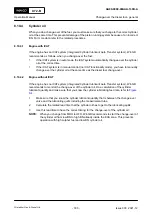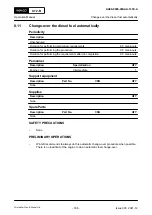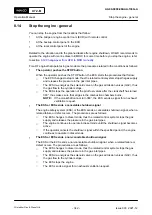
8.8
Maneuver the ship - general
Maneuvering is the operation between leaving a port and approaching to port. Maneuvering also
includes all changes during usual operation, for example changing of direction.
The conditions as follows affect the speed of the ship:
•
Sailing into strong head winds
•
Sailing in heavy seas
•
Sailing in shallow water
•
Unwanted heavy growth on the hull.
The governor increases the fuel quantity to keep the speed of the ship constant. The increase in
the fuel injection quantity shows on the control panel.
8.8.1
Usual maneuvering
The maneuvering range is the speed range between FULL AHEAD and FULL ASTERN. This range
is usually divided into four maneuvering steps with related given speeds in each direction.
Load changes must be done slowly to let the piston rings adapt the new conditions. This also
prevents increased wear and contamination of the piston rings and the cylinder liners.
The total time to increase the engine load from leaving port to sea speed must not be less than
30 minutes.
The total time to decrease the engine load from sea speed to port approach must not be less then
15 minutes.
Usual time for these two maneuvering operations is between 40 and 45 minutes.
You can do maneuvering operations from the locations that follow:
•
At the bridge or engine control room (ECR) with remote control
•
At the backup control panel in the ECR
•
At the local control panel of the engine.
NOTE:
Maneuvering from the local control panel does not decrease the quality or the
safety of the engine operation.
X72-B
AA00-0000-00AAA-130C-A
Operation Manual
Maneuver the ship - general
Winterthur Gas & Diesel Ltd.
- 328 -
Issue 003 2021-12

